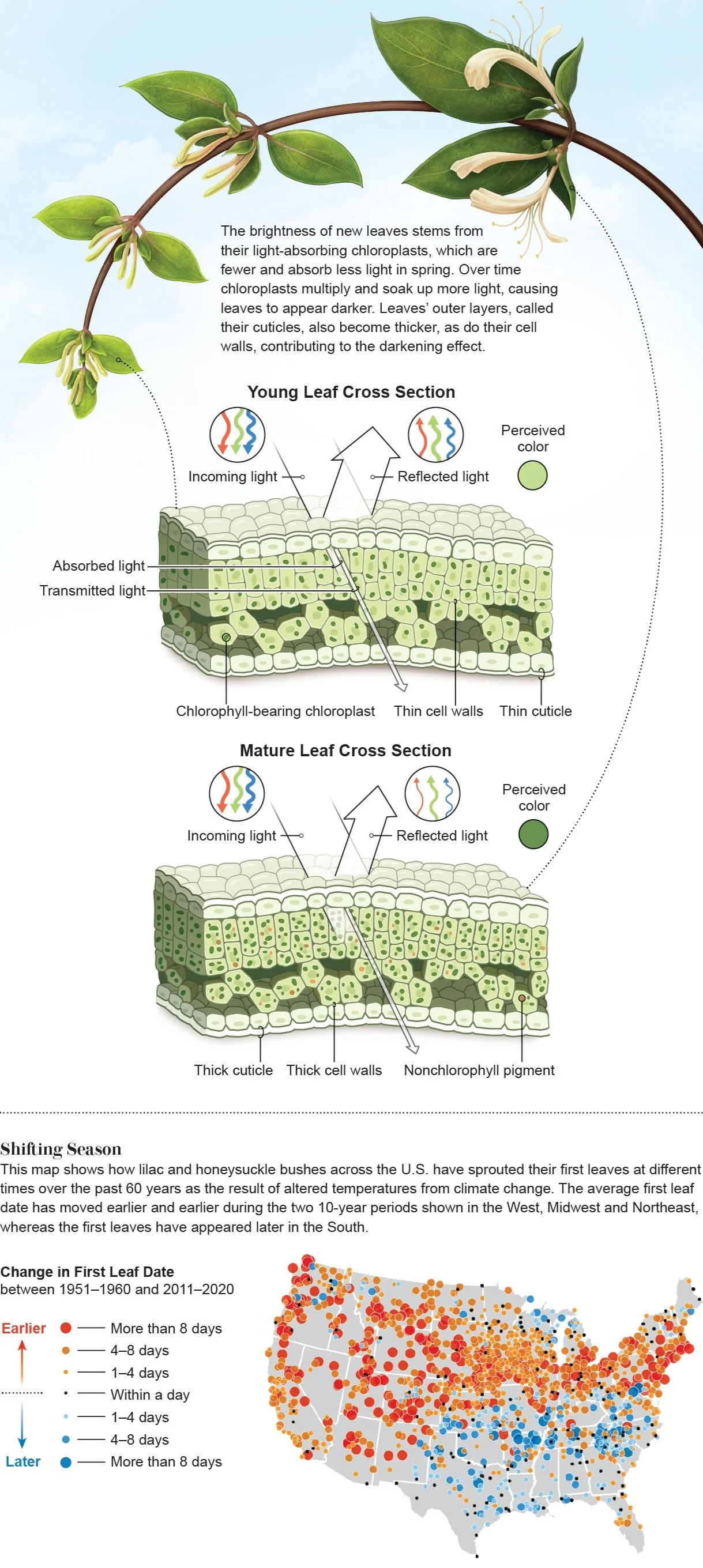The Science of Spring’s Green
ABOUT: This piece highlights the science behind the color change that occurs in spring foliage. During this season, new leaves have fewer chloroplasts, which absorb less light, resulting in brighter greens. As the chloroplasts increase within leaves over time and absorb more light, the leaves appear darker. Additionally, the cuticles and cell walls of leaves become thicker, contributing to the darkening effect.
This artwork captures the variety of foliage that people are familiar with seeing during spring, while offering a glimpse into the cellular structures that give rise to the foliage's appearance.
Digital illustration of a sprig of Honeysuckle with young, bright green leaves at the tip and more mature, dark green leaves along the branch. Below the sprig, two cross sections of leaves are depicted, each revealing how the respective leaf stages (young/mature) interact with incoming-to-reflective light at the cellular level to create their perceived color.
LINK: https://www.scientificamerican.com/article/the-science-of-springs-green-show/
